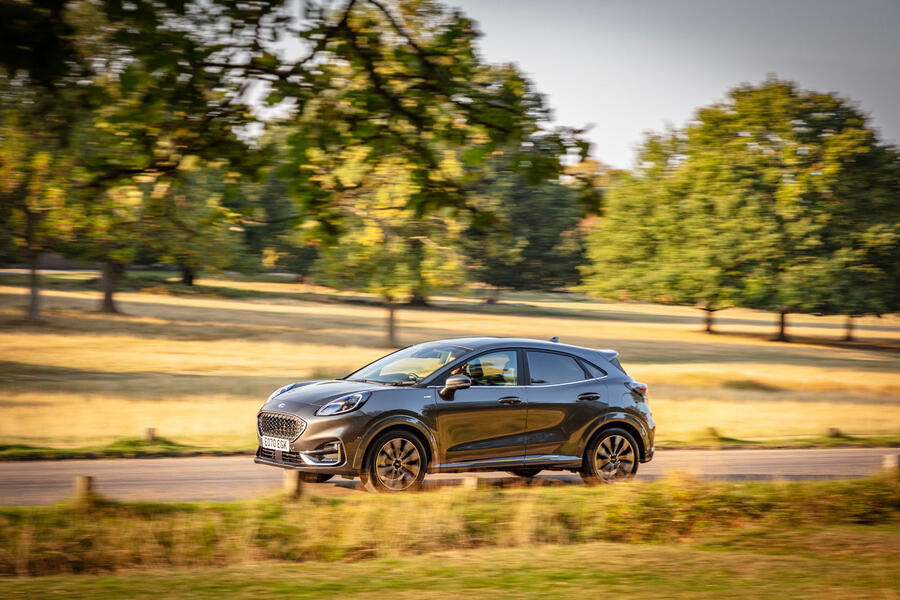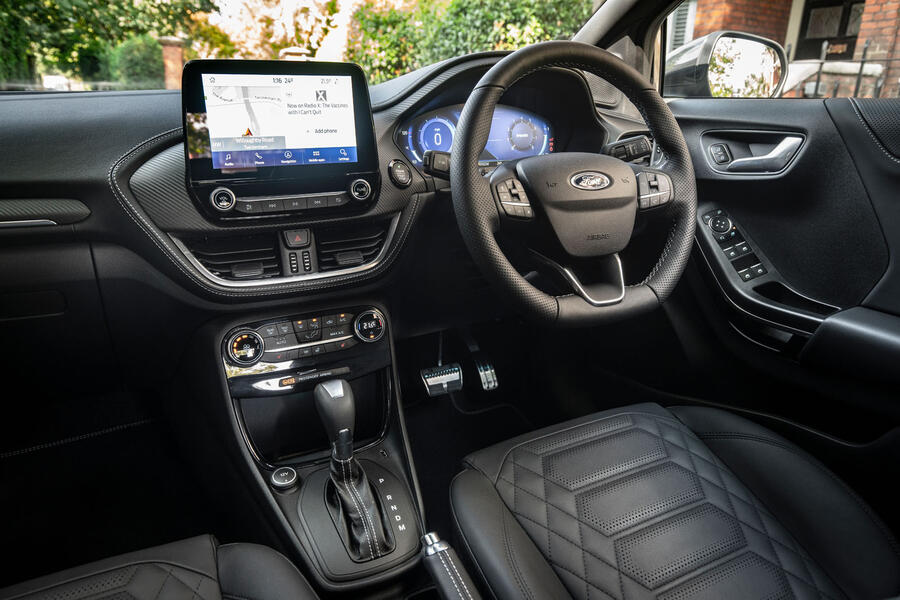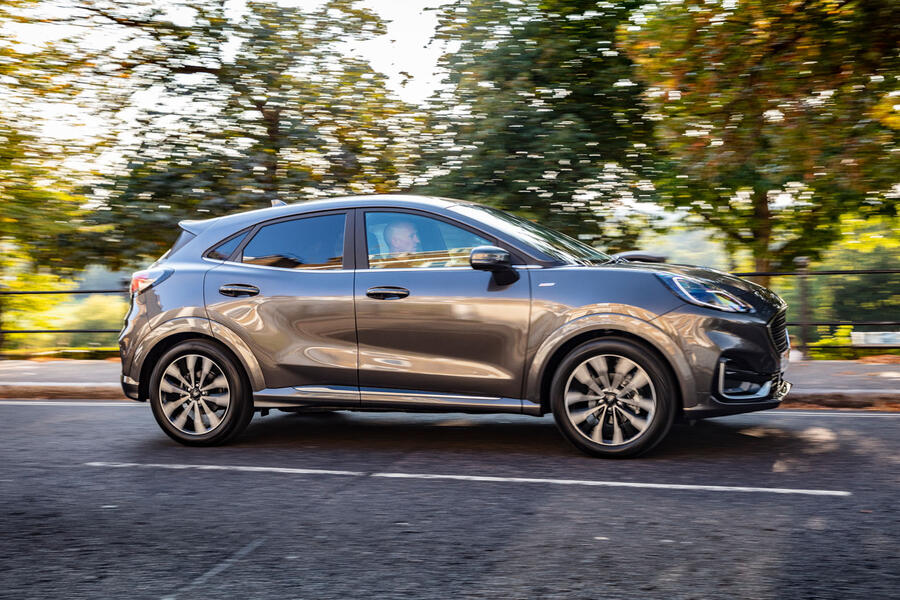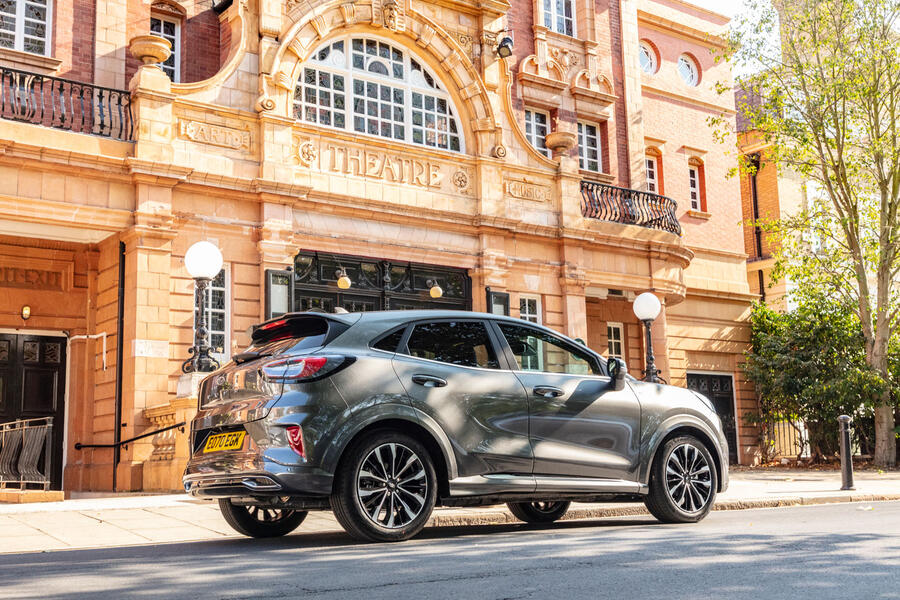What is it?
This is the Ford Puma crossover hatchback in its latest extra-ritzy trim level and fitted with a new seven-speed twin-clutch automatic gearbox. Both things add variety to a derivative range that remains a little bit short of it, at least until the Puma ST arrives in a few weeks.
Previously, Ford had offered this car with a 1.0-litre Ecoboost turbo three-pot petrol engine and in mild-hybridised 123- or 153bhp guises, both with a six-speed manual gearbox; or in 1.0-litre 123bhp manual guise and without the 48v hybrid assistance but only on lower-grade cars. As of now, though, you can have an unhybridised 1.0-litre, 123bhp Puma with a seven-speed two-pedal gearbox if you prefer. And that’s the whole shooting match.
Why can’t you combine a mild hybrid engine with an automatic gearbox? It does seem odd. I suspect it’s for boring mechanical reasons to do with exactly how the car’s engine, gearboxes and its mild hybrid systems all marry together.
Opting for a two-pedal Puma might actually feel a bit like ordering an automatic hatchback used to feel about twenty years ago. You’ll get the slowest-accelerating, highest-emitting, least economical and most expensive engine derivative in the price list. Tempting, isn’t it? That will likely be disregarded entirely by drivers who just don’t want to have to remember to change ratios themselves, of course; but it’s also unlikely to make two-pedal Pumas particularly popular as fleet cars in the way that certain automatic BMWs, Audis and VWs have become so.
Meanwhile, if you really want to probe the outer limits on how much you might be able to pay for a Puma, there is our test car’s equally new and range-topping ‘ST-Line X Vignale’ trim level. As has become typical of these glammed-up Fords, it doesn’t come with any particular mechanical revisions, but does bring some bumper, grille and alloy wheel styling changes, as well as some interior trim and equipment upgrades.




Add your comment